This North American native flowering herb is a must-have in the wildlife garden, cottage garden, herb garden, and veggie garden.
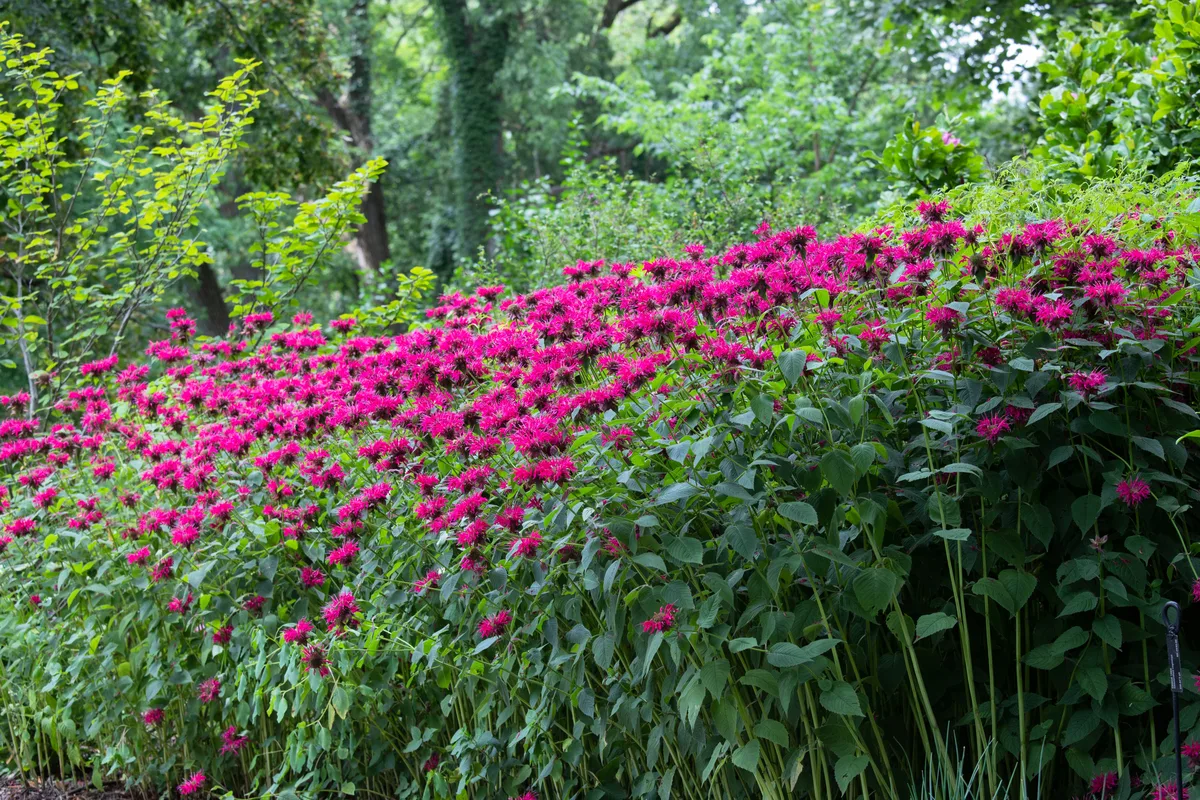
For full summer splendor, Bee Balm loves rich, moist soil in full sun.
Bee Balm’s flaming flowers attract tons of exciting visitors, but deer and rabbits leave it be.
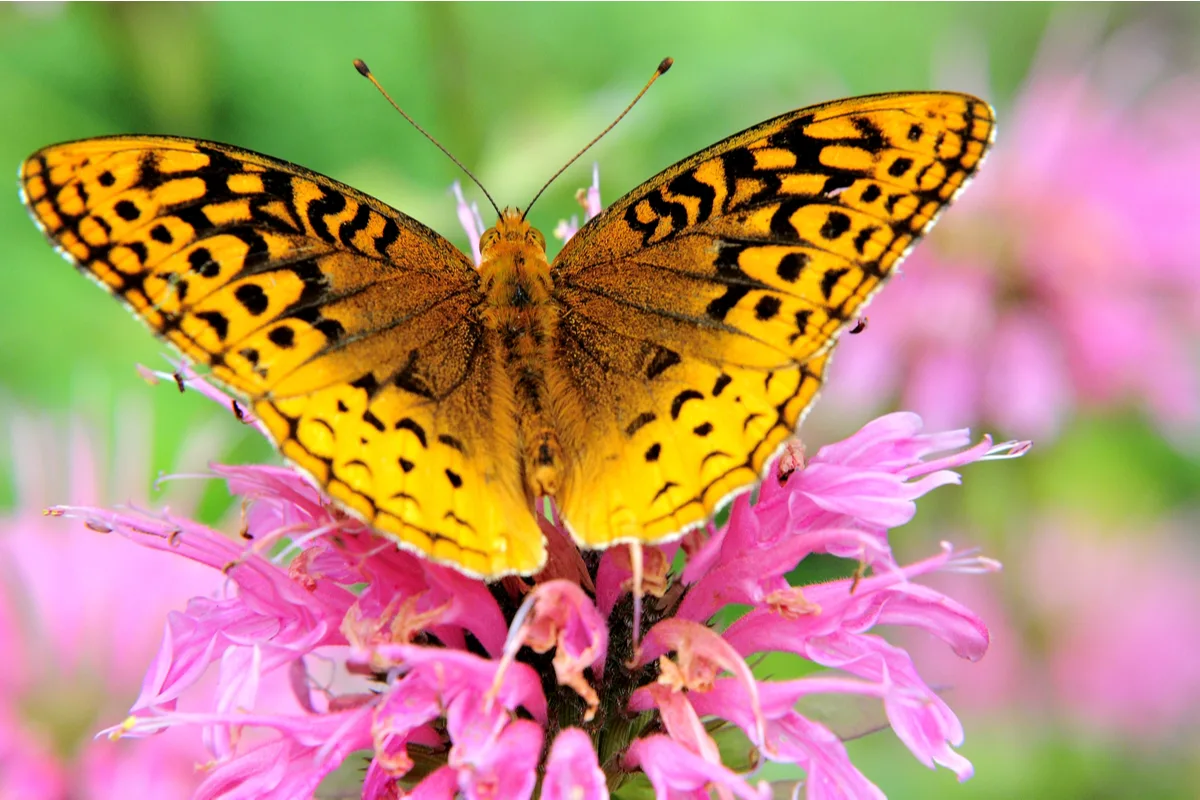
With vivacious vigorous growth, bee balm spreads through seeds and underground stolons.
As a member of the mint family, Bee Balm has square stems and fragrant opposite foliage.
Sometimes called wild bergamot, Bee Balm’s aromatic leaves smell like bergamot orange oil, the traditional flavoring of Earl Gray Tea.
Developed from several native species, new Bee Balm cultivars have better disease resistance with a more compact growth habit.
There are nearly limitless bountiful reasons to grow Bee Balm. Here are our top 15.
15 Reasons To Grow Bee Balm In Your Garden
1. Vibrant North American Native Plant
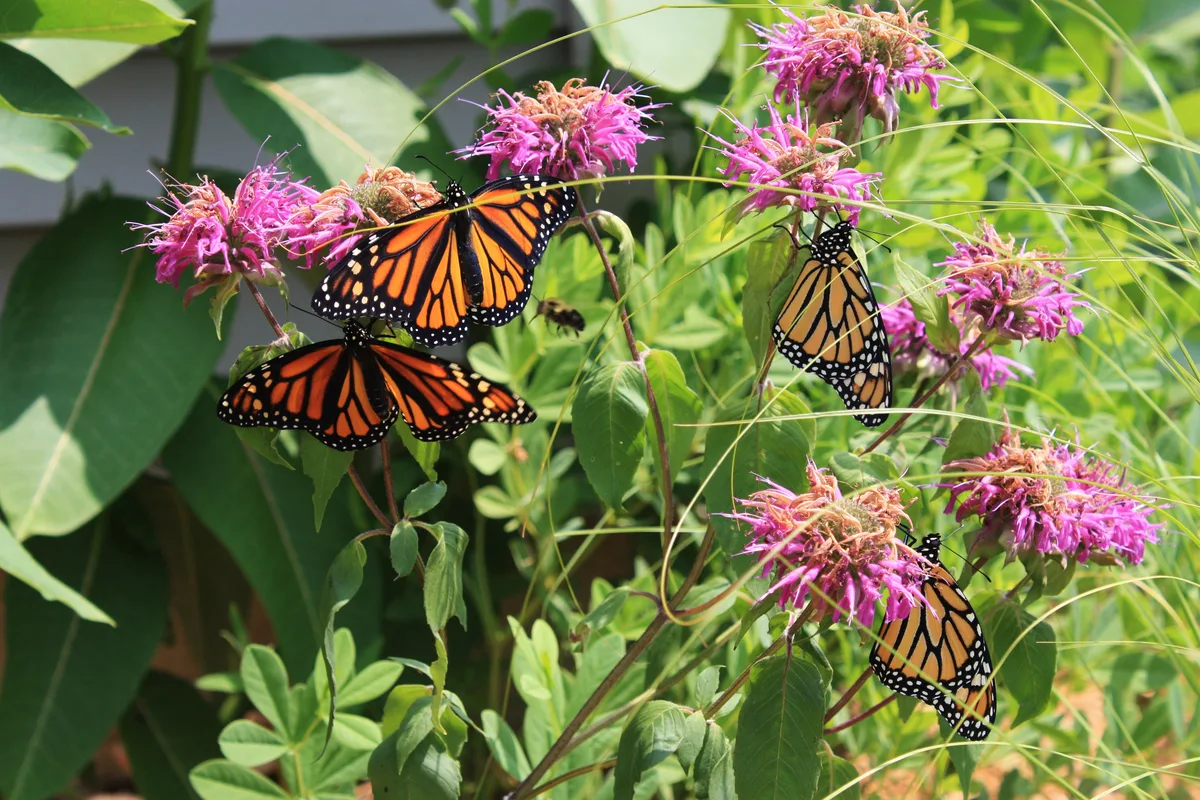
Native plants are exceptionally well adapted to local climates and soil conditions.
Similarly, they have evolved to support indigenous populations of wildlife, birds, butterflies, and native bee species.
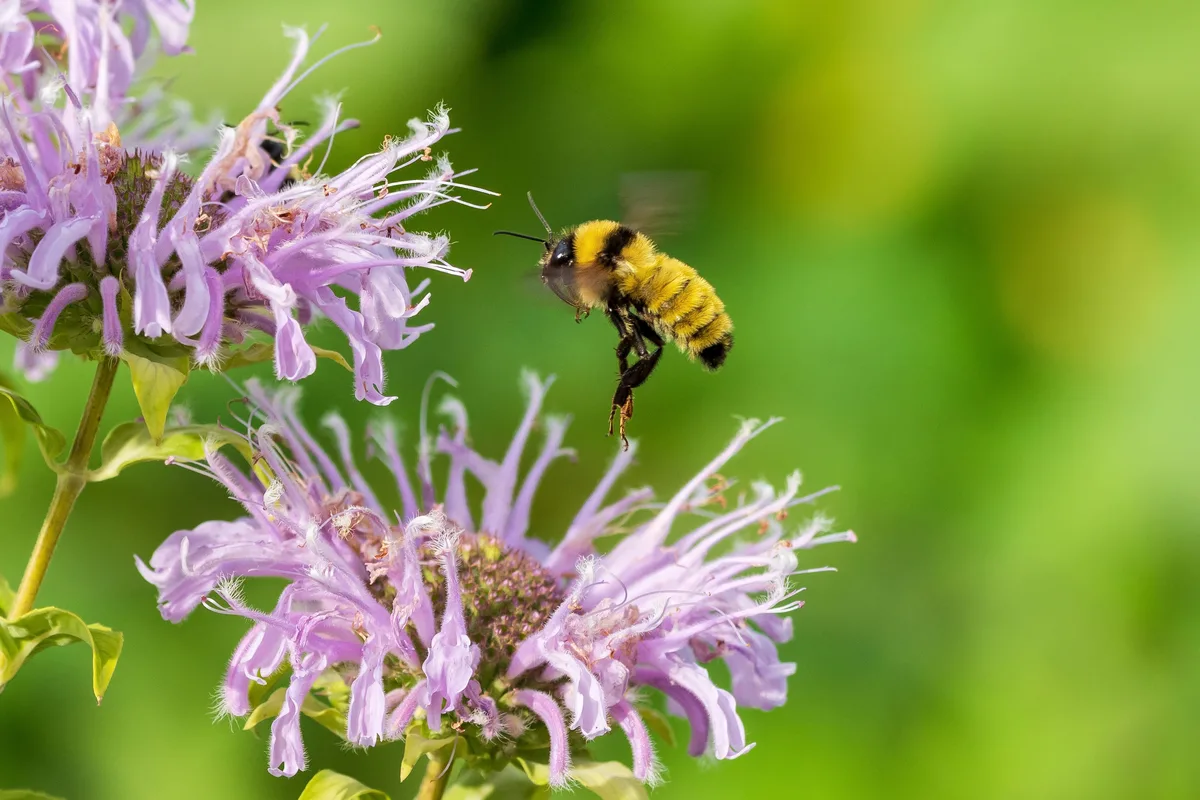
As well, Bee Balm was used by many North American indigenous people as food and medicine.
The monarda genus was named way back in 1574 by Spanish botanist, Nicolas Monardes, who described plants of the New World.
2. Wild Looking Wildlife Champion
Bee Balm’s flamboyant shaggy flowers attract and support wildlife including nectar-loving hummingbirds, bees, and butterflies.
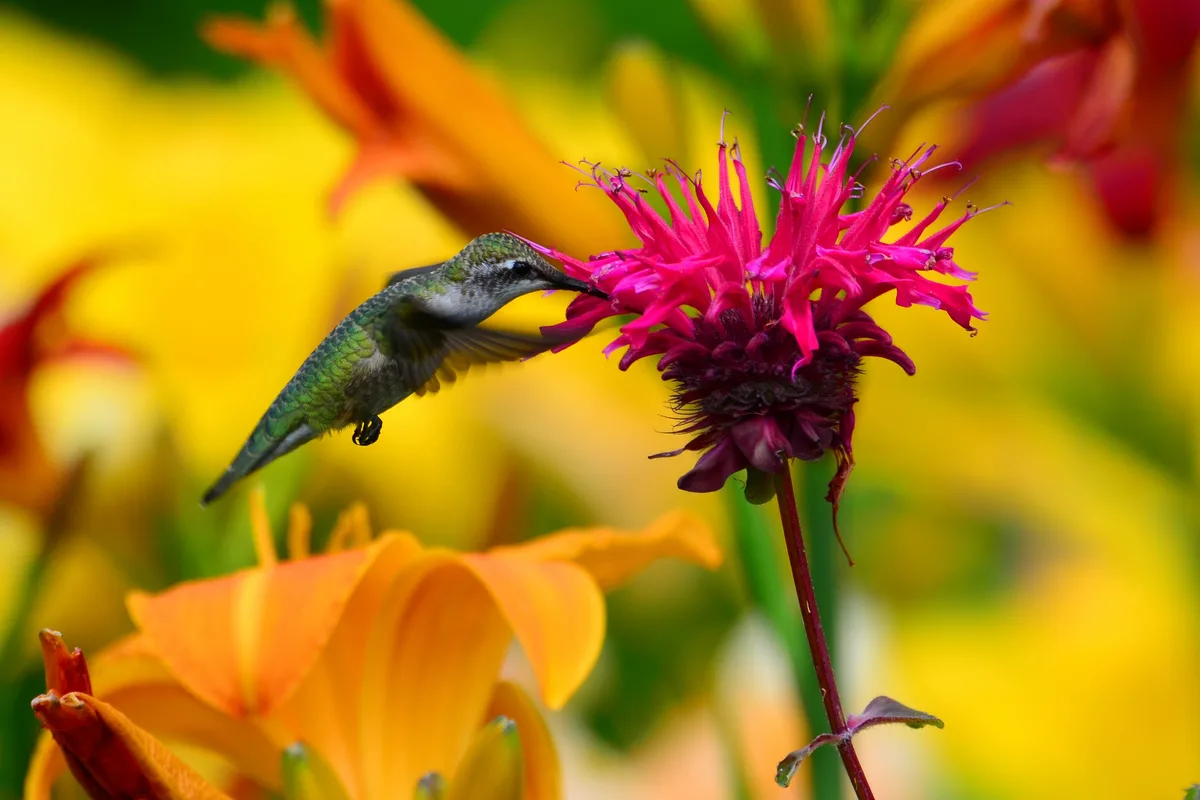
In fall, Bee Balm’s nutlets attract many seed-eating birds like sparrows, goldfinches, and redpolls.
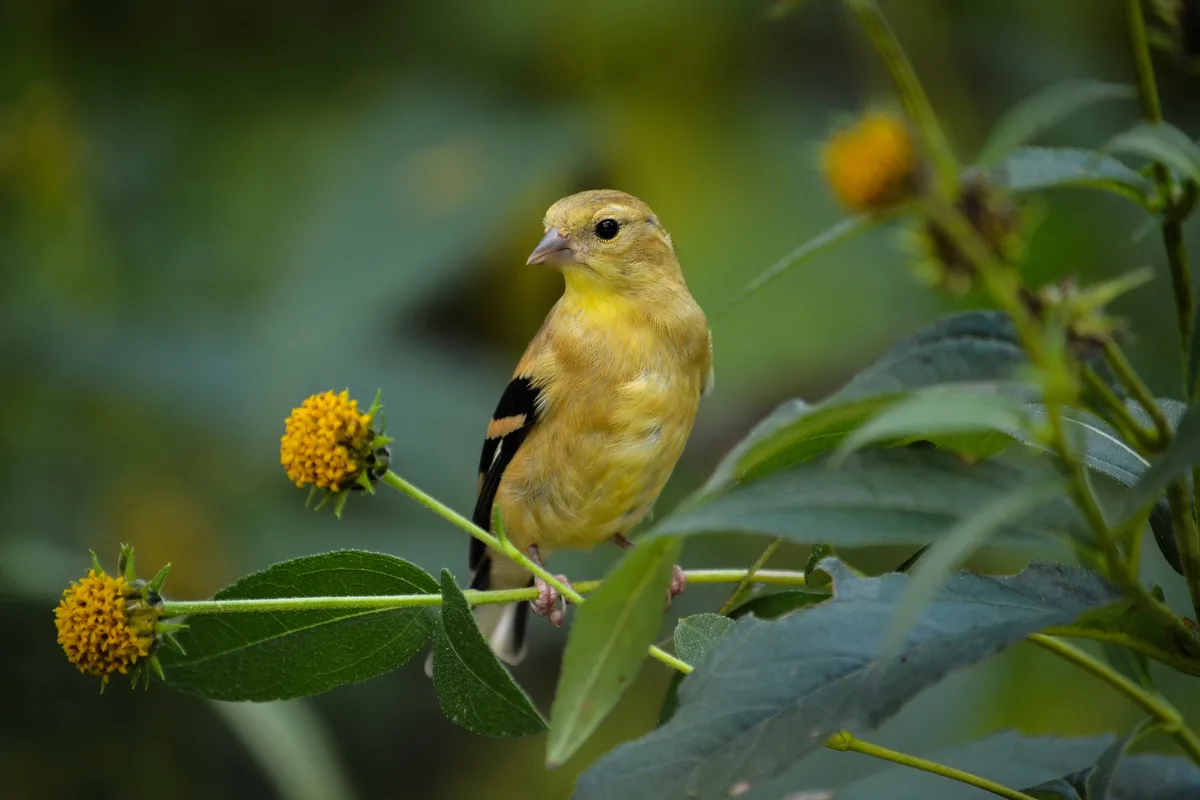
Insect-eating birds and beneficial insects such as ladybugs thrive when Bee Balm is burgeoning.
3. Rabbit and Deer Resistant
Truly a boon for wildlife, but incredibly, Bee Balm is dodged by deer and rabbits.
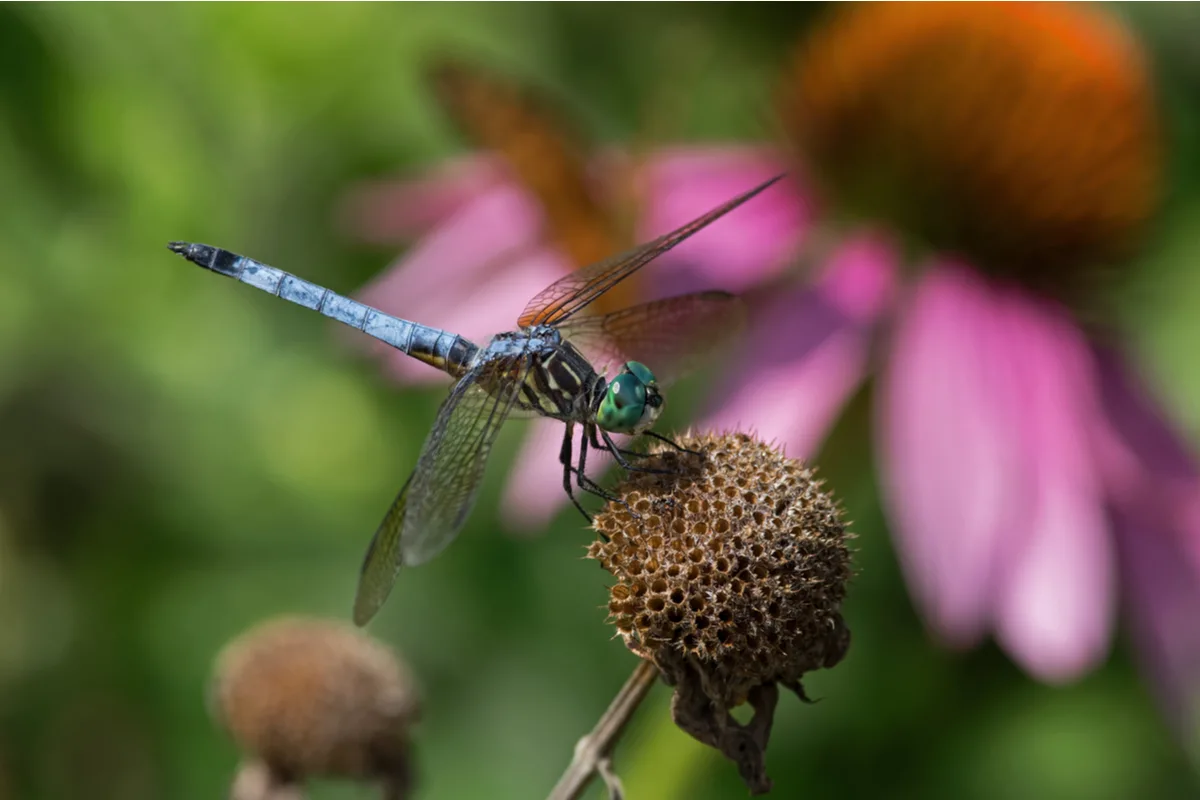
Deer-resistant perennials like Bee Balm suffer less deer damage and they may help protect more vulnerable plants by discouraging deer visits.
4. Summer Bloomer that You Can Plant Spring or Fall
As a summer bloomer, Bee Balm can be planted in spring and may blossom in the first year.
These strong perennials love being planted in the fall, which gives Bee Balm a healthy start for next summer’s flower show.
5. Colony-Forming Legacy Perennial
In moist, sunny locations, Bee Balm plants are a long-living flowering perennial.
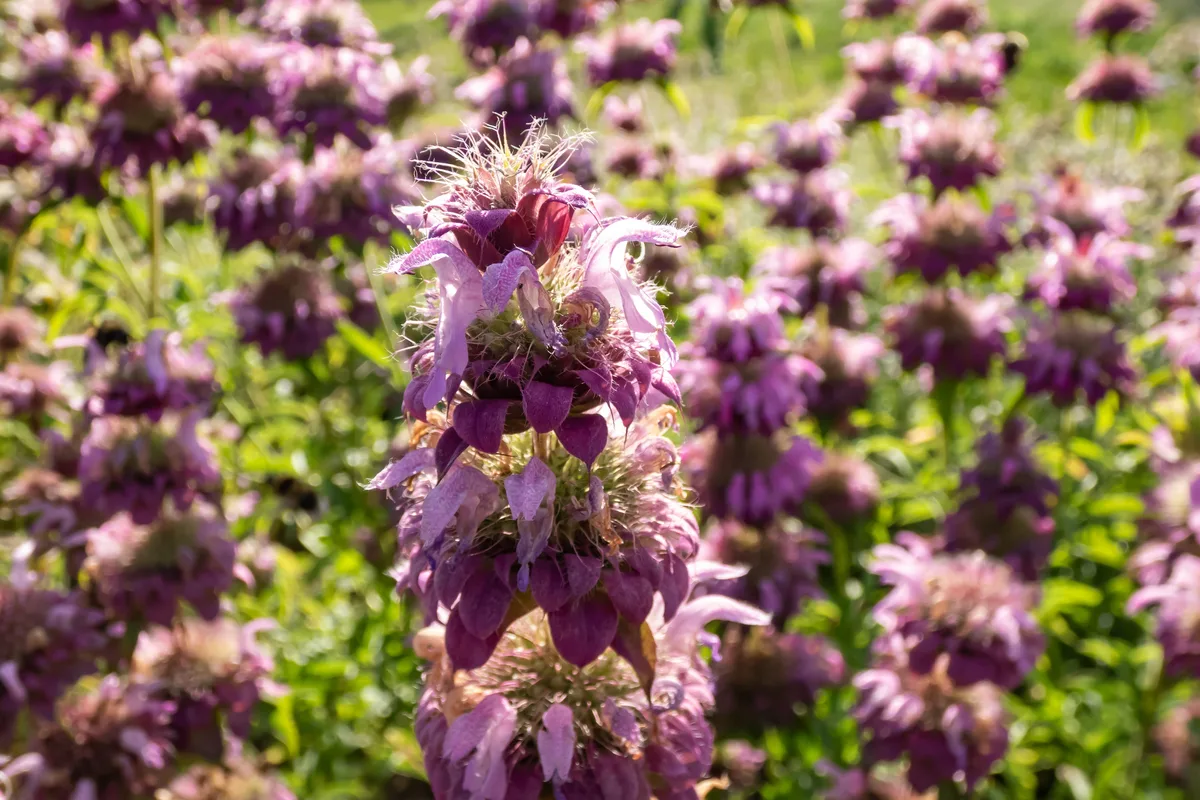
Bee Balm plants form colonies by spreading their underground root system and by seeds.
Dividing Bee Balm plants helps to invigorate plants as their center dies out after 3 to 5 years.
Share divided Bee Balm plants throughout your garden, with neighbors, and gardening friends and family.
6. Pretty in Pink
A nod to the romantically inclined, Bee Balm blooms in a myriad of pinks to complement your pink perennials.
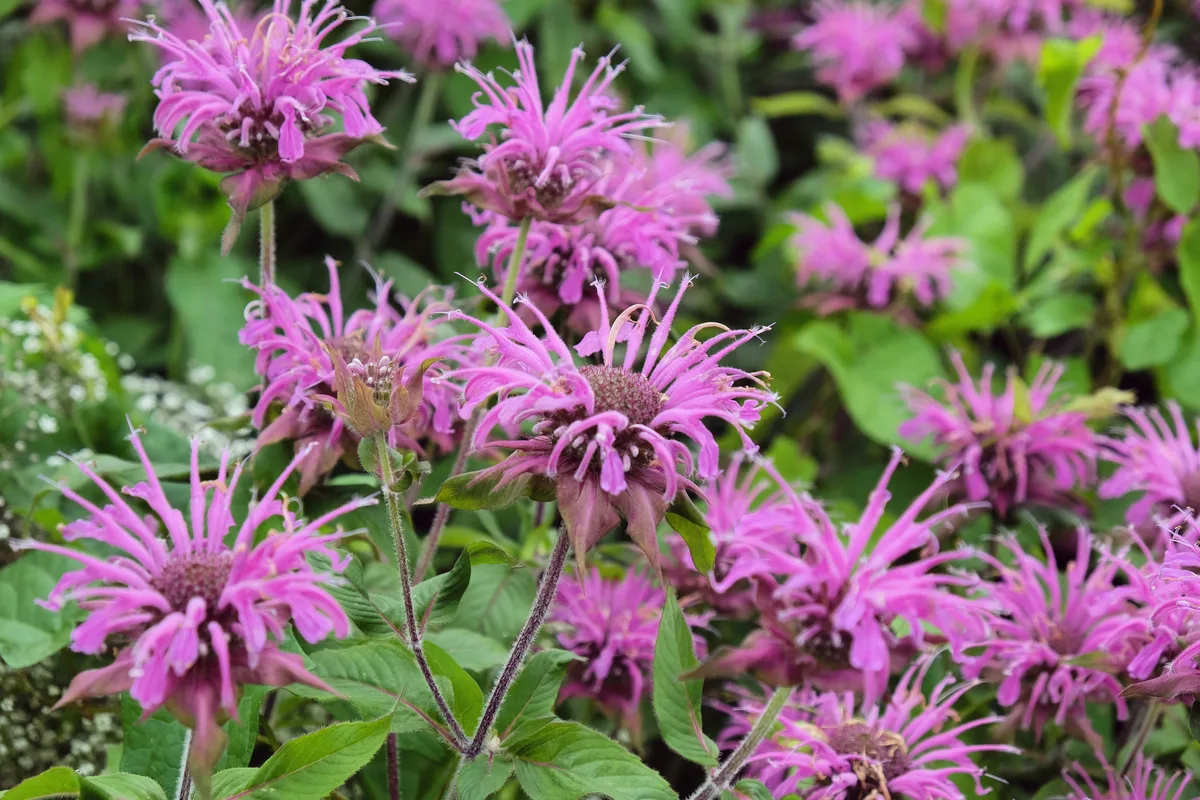
Pink cultivars abound including the clear bright ‘Pardon My Pink’ variety, the bicolor pink ‘Leading Lady Orchid’ from the Leading Lady series, or the hot pink ‘Cherry Pops’ from the Sugar Buzz® series.
7. Scarlet, Red, Purple, and Lavender Varieties Too!
Indulge further into the Valentine color scheme with scarlet red native bee balm, Monarda didyma, and its cultivars, or dive into purple with varieties like Monarda ‘Balmy Purple’.
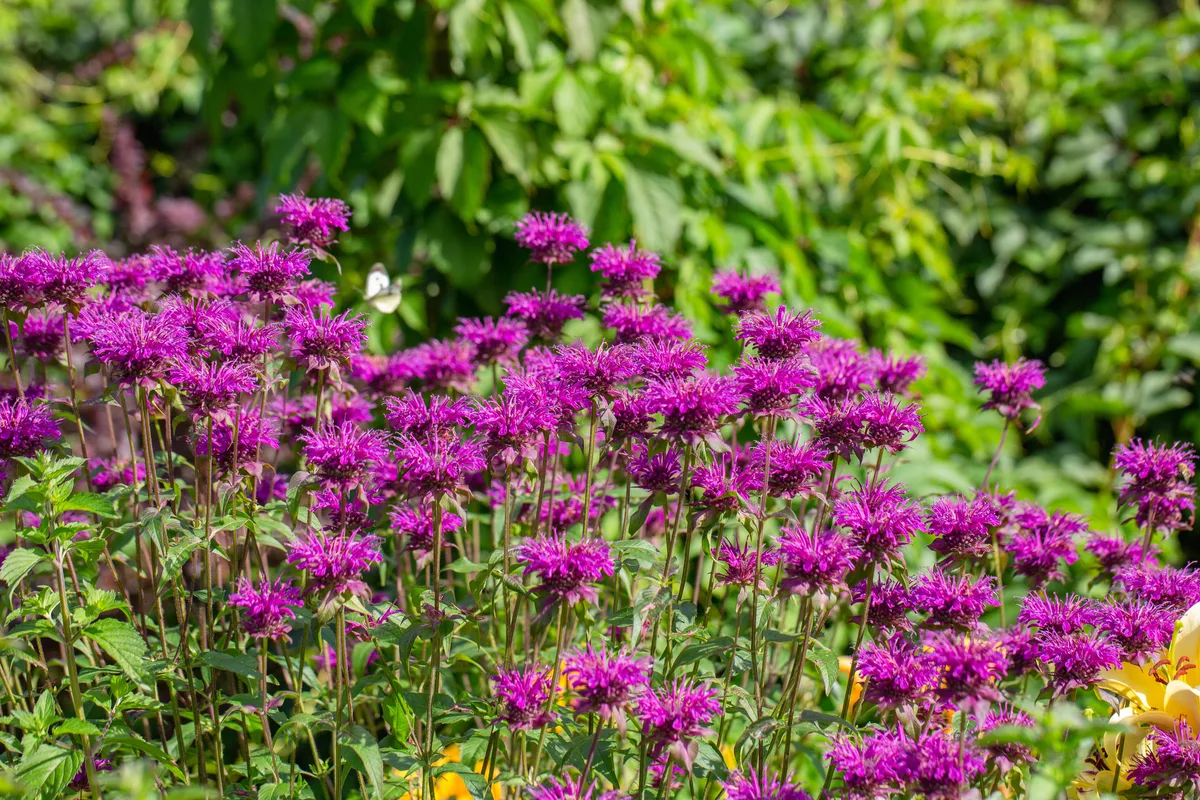
8. Vivacious Bloomer Exceeds Expectations with Diligent Deadheading
Bee Balm, like many plants of the mint family, develops terminal blossoms, or flowers at the top end of stems.
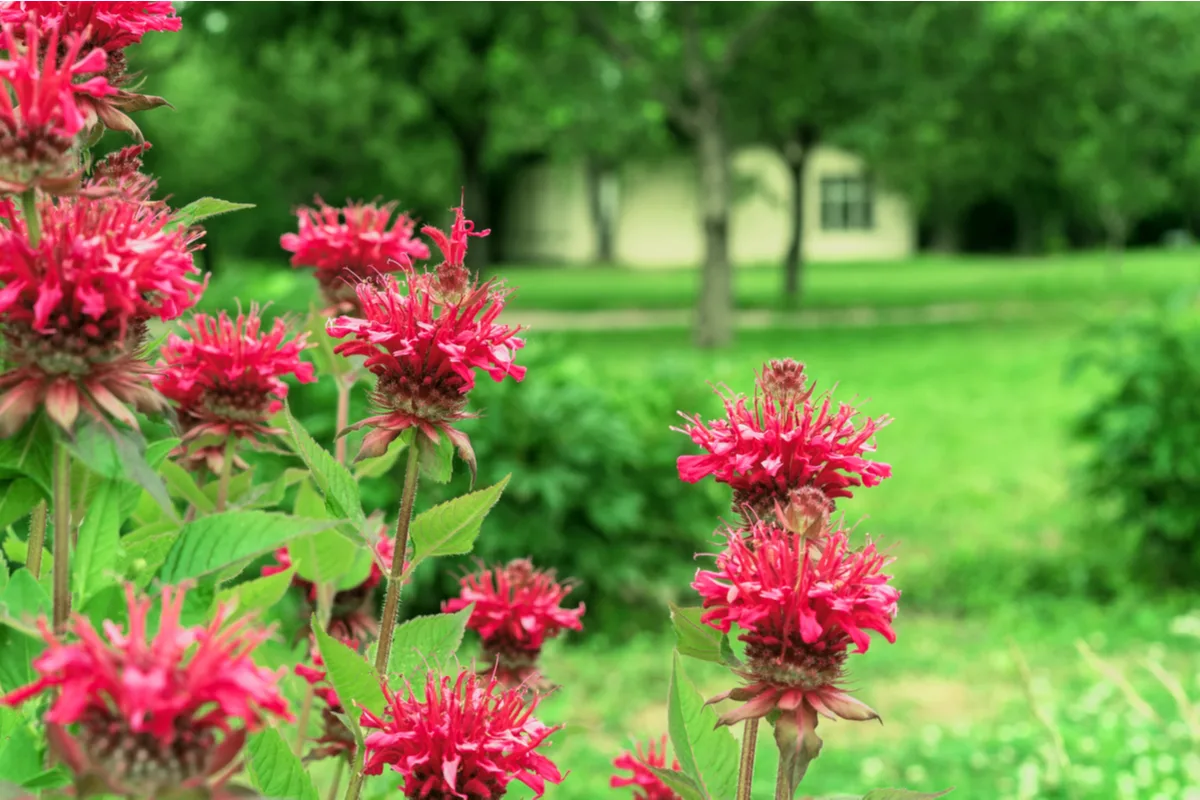
Pinch young plants in spring to encourage side shoots for fuller, bushier plants and more flowers.
After the first flush of flowers in summer, diligent deadheading will extend the Bee Balm bloom season.
9. Happy in the Herb Garden
Bee Balm is a graceful addition to the moist end of the herb garden.
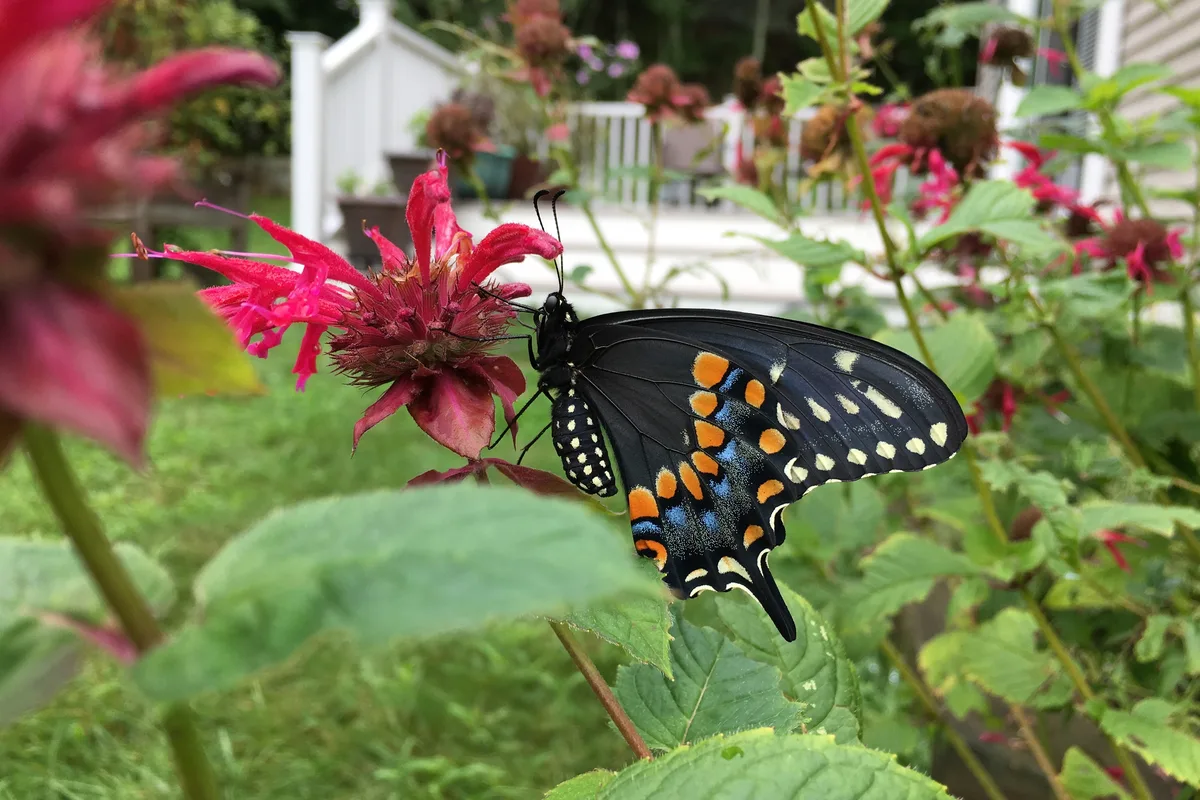
Extensively useful, Bee Balm grows beautifully alongside other herb garden favorites such as peppermint, parsley, and lemon balm.
With a long history of medicinal and edible uses, Bee Balm also shares similar growth habits and harvest times to many herb garden plants.
10. Cheerful in the Cottage Garden
The trifecta of beauty, usefulness and ease of care make Bee Balm the perfect plant to infiltrate the Cottage Garden.
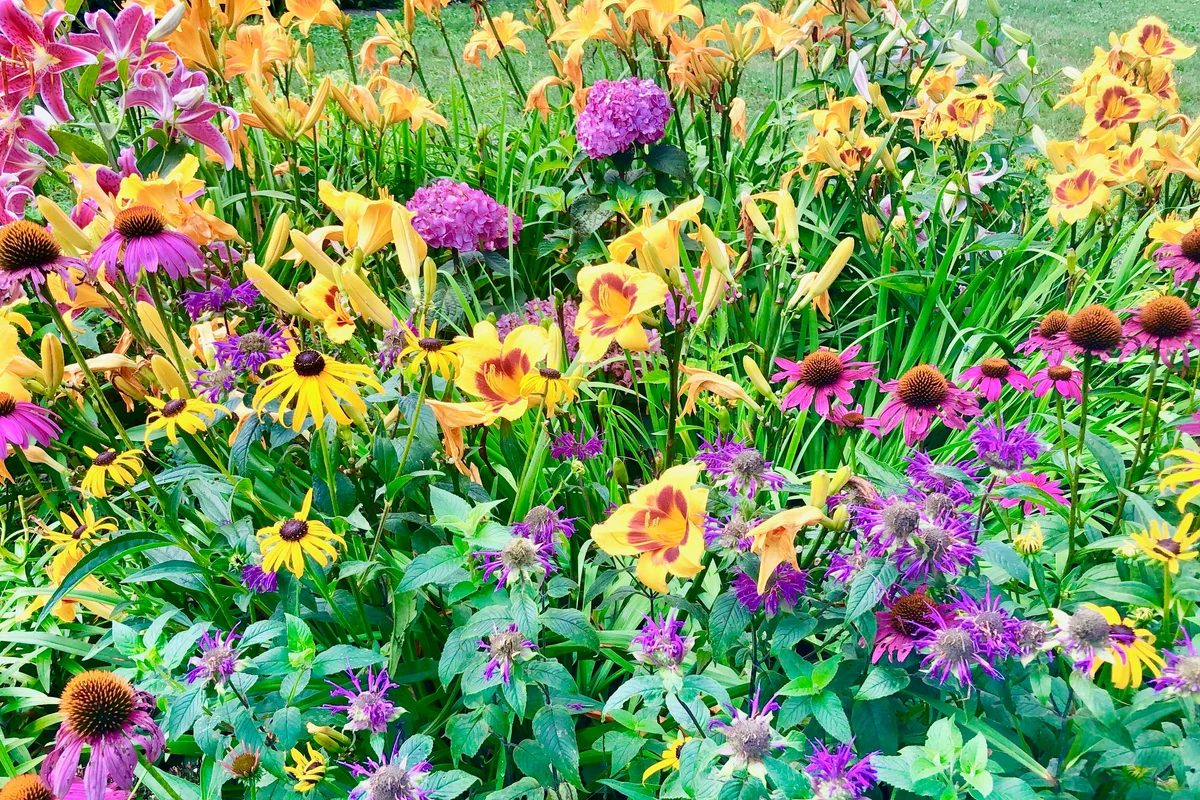
Bee Balm delights the cottage garden scene with peace and charm.
The aromatic foliage, entertaining visitors, and upright sturdiness of Bee Balm embellish this garden style.
11. Vegetable Garden Companion
Especially tomatoes, squash, and beans are helped by growing close to Bee Balm.
The innumerable pollinators and beneficial insects that Bee Balm attracts are a huge bonus to the vegetable garden.

12. It’s Medicinal
Bee Balm has antimicrobial properties and a host of health benefits.
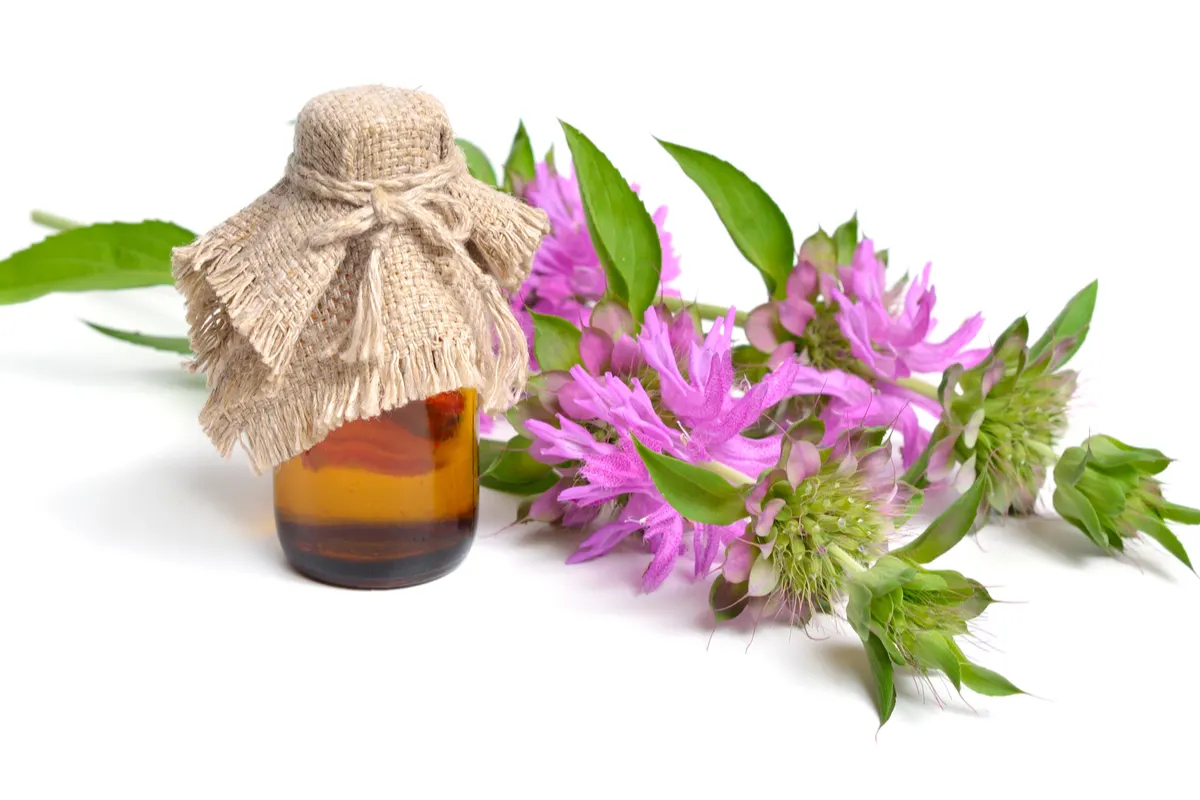
From fighting fungal infections, aiding sore muscles, and helping clear nasal passages, Bee Balm is truly multipurpose.
13. It’s Edible
The leaves and flowers of Bee Balm are edible, tasty, and super pretty!
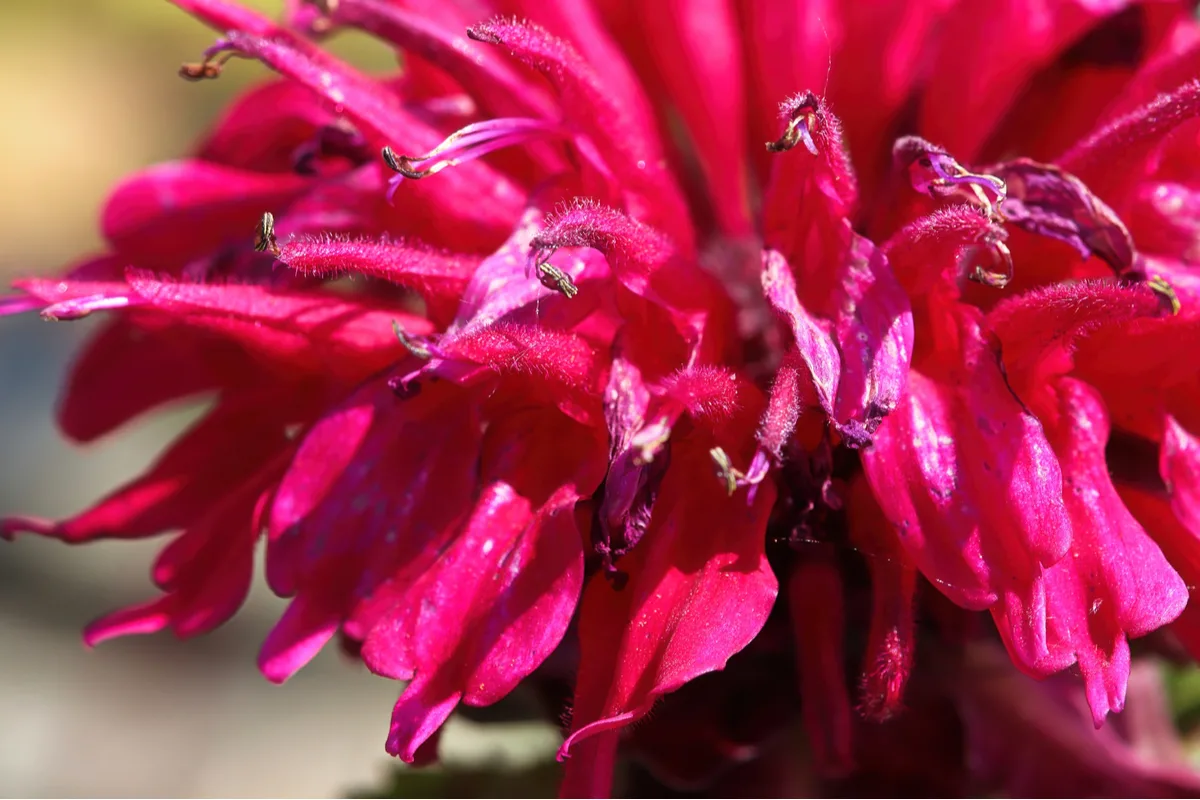
A gorgeous garnish, flowers can top a salad or make an impressive dressing ingredient.
Steep flowers for tea or for making flower jelly.
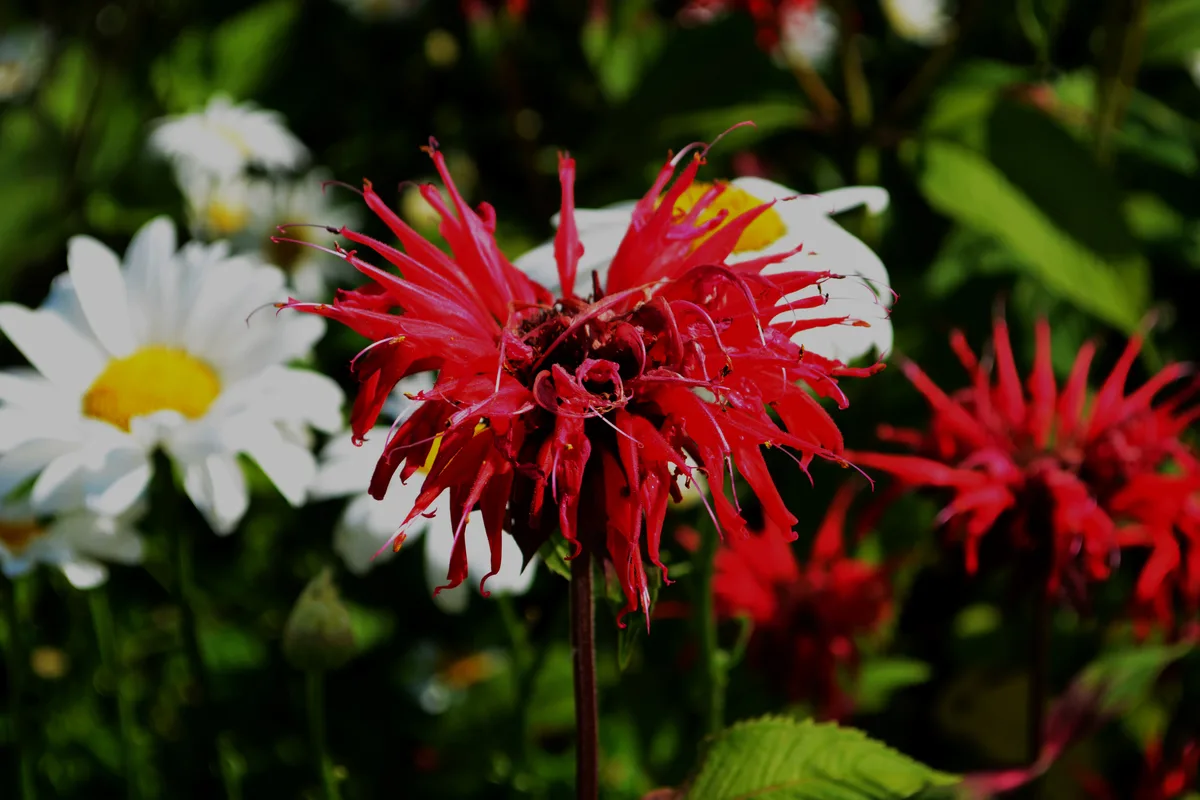
Fresh or dried aromatic Bee Balm leaves make soothing herbal tea or can liven up summer salads.
14. Fragrant Foliage
Immerse yourself in Bee Balms’ spicy fragrance indoors and out.
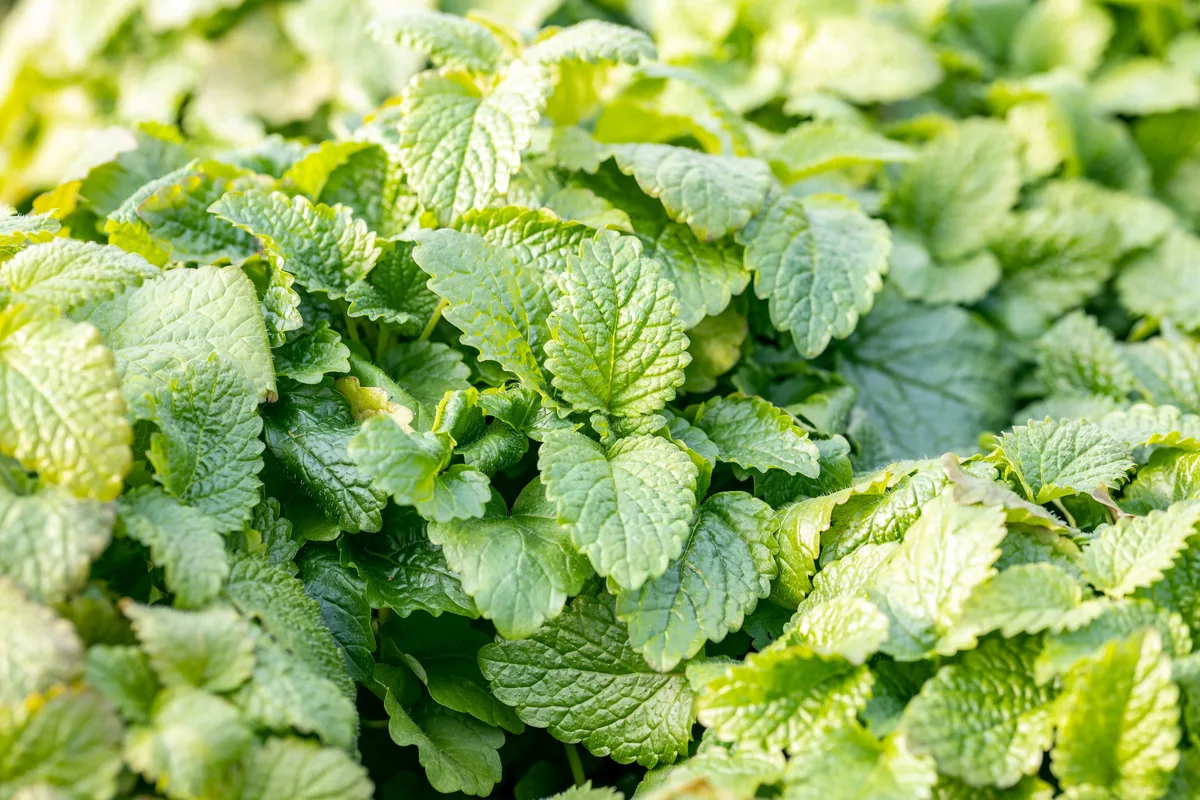
Outside, the aromatic peppery foliage adds to a sweet-smelling garden.
Fresh and dried leaves will bring fresh spicy clean fragrance indoors in bouquets or potpourris.
15. Full Sun, Moisture Loving, and Easy to Grow – What’s Not to Love?
Is there a moist area of your garden in full sun? Bee Balm is easy to grow and comes in a wide variety of heights and colors.
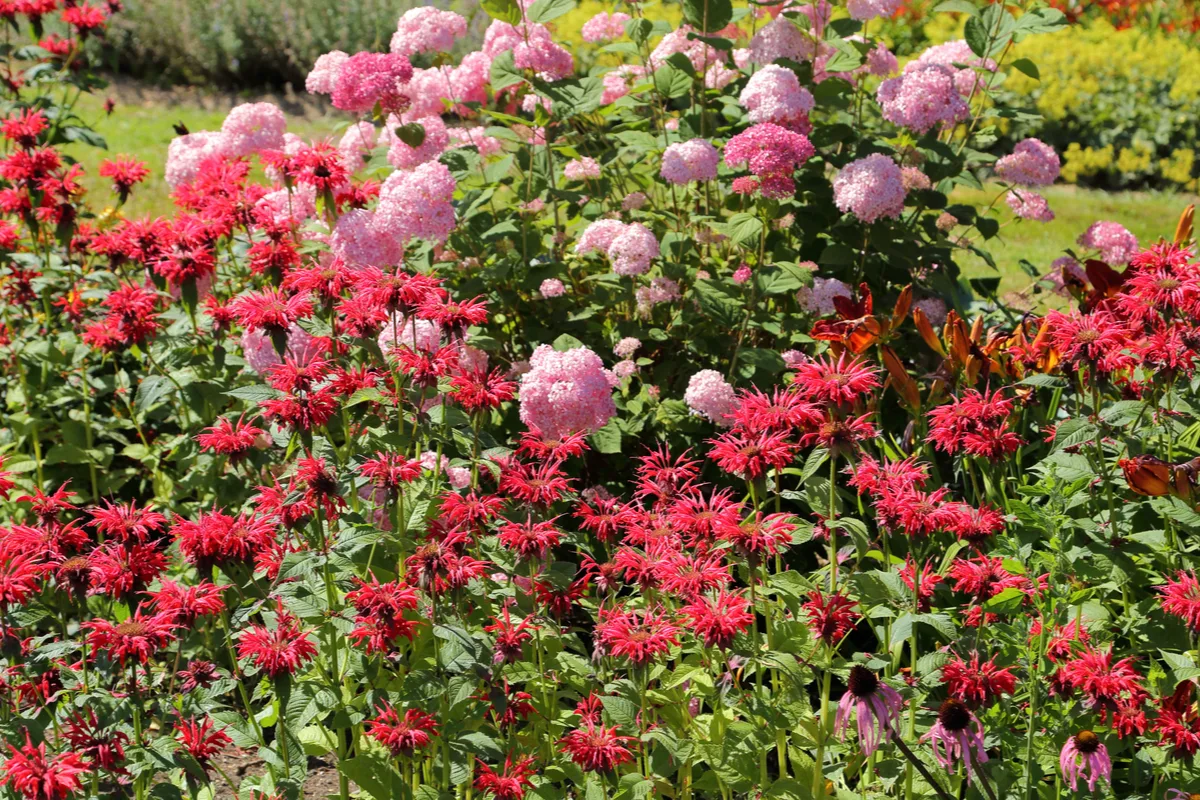
This low-maintenance perennial is beneficial for wildlife and the garden, all while looking gorgeous.
How To Grow & Care For Bee Balm
Bee Balm is an easy-going herbaceous perennial of the mint family of plants.
Topped with abundant nectar-rich shaggy blossoms in summer, Bee Balm grows 2 to 4 feet tall on strong upright stems.
Bee Balm thrives in zones 3 to 9 in rich, moist soil in full sun.
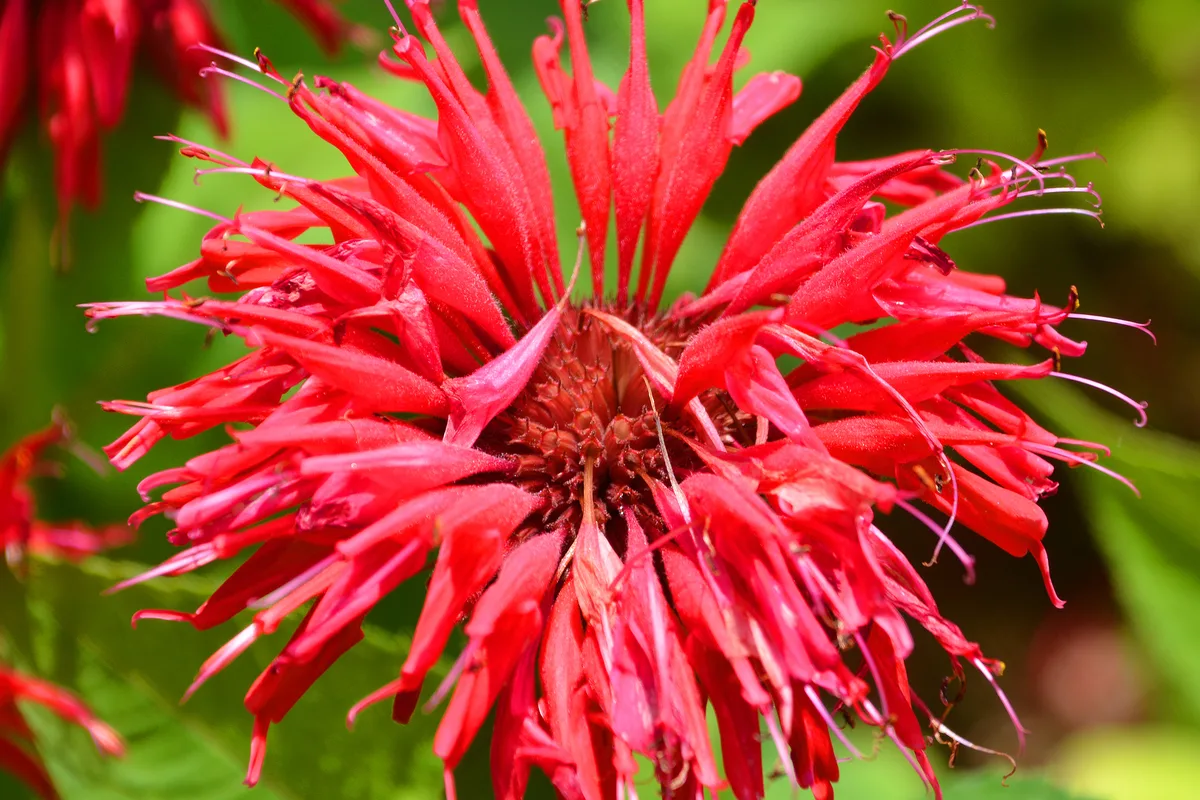
Bee Balm Snapshot
| Botanical Name | Monarda |
| Common Names | Bee Balm, Wild Bergamot |
| Plant Type | Flowering Herbaceous Perennial |
| Native Origin | North America |
| USDA Hardiness Zone | 3 to 9 |
| Flower Color | Red, Scarlet, Pink, Purple, White |
| Bloom Time | Mid to Late Summer |
| Growth & Size | 2 to 4 feet tall and 2 to 3 feet wide. Dwarf varieties up to 18 inches tall. |
| Exposure | Full sun with at least 6 hours of sunlight each day. |
| Suitable Soil & pH | Moist, rich soil with a neutral pH of 6.0 to 7.0 |
Plant Care Overview
Bee Balms need even moisture throughout the growing season. Water weekly and provide mulch to preserve moisture.
Full sun is where Bee Balm shines. Full sun also helps promote excellent air circulation which contributes to better disease resistance.
It is recommended to divide Bee Balm plants every 3 to 5 years to invigorate this clump-forming perennial.
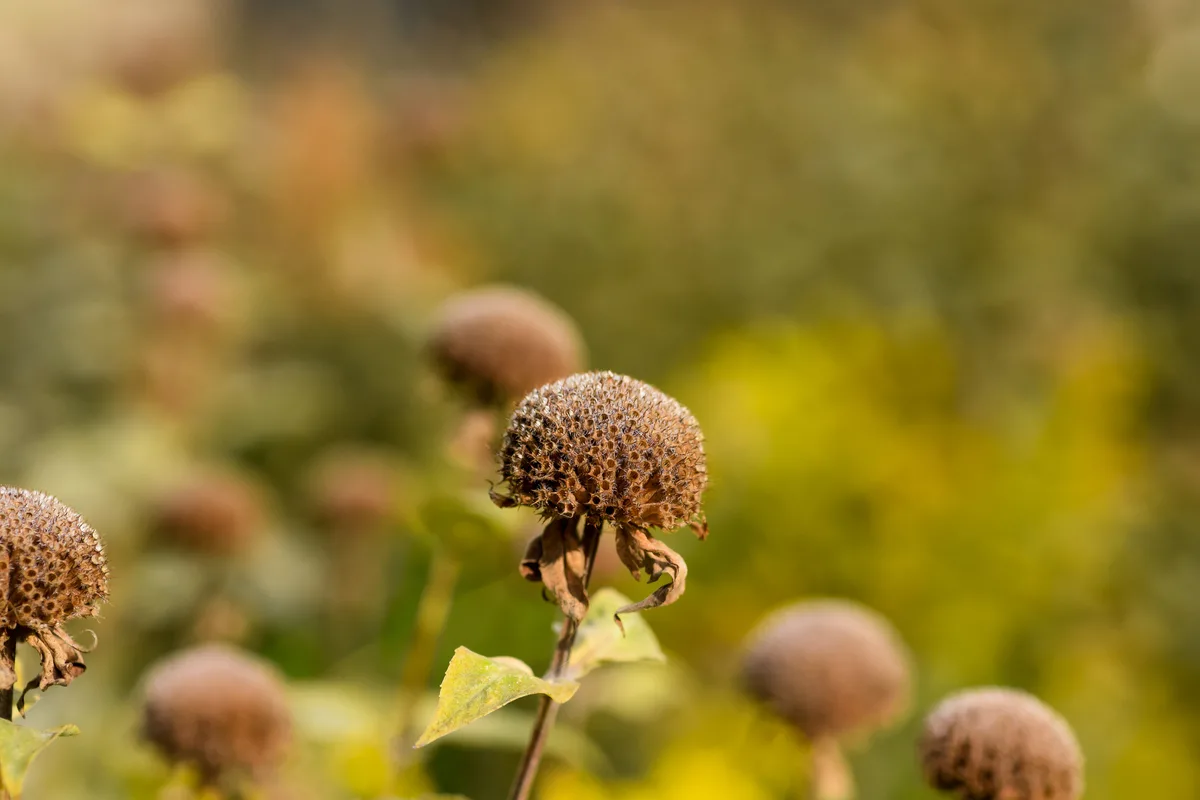
While pinching plants and deadheading will encourage more nectar-rich blossoms, leaving seedheads on plants provides nutlets for birds in winter.
Planting Location:
- Zone: 3 to 9
- Light: Full Sun
- Soil: Rich, well-draining soil with neutral pH of 6.0 to 7.0.
- Native Habitat: North America.
- Temperature and Humidity: Relatively moist, warm, temperate conditions.
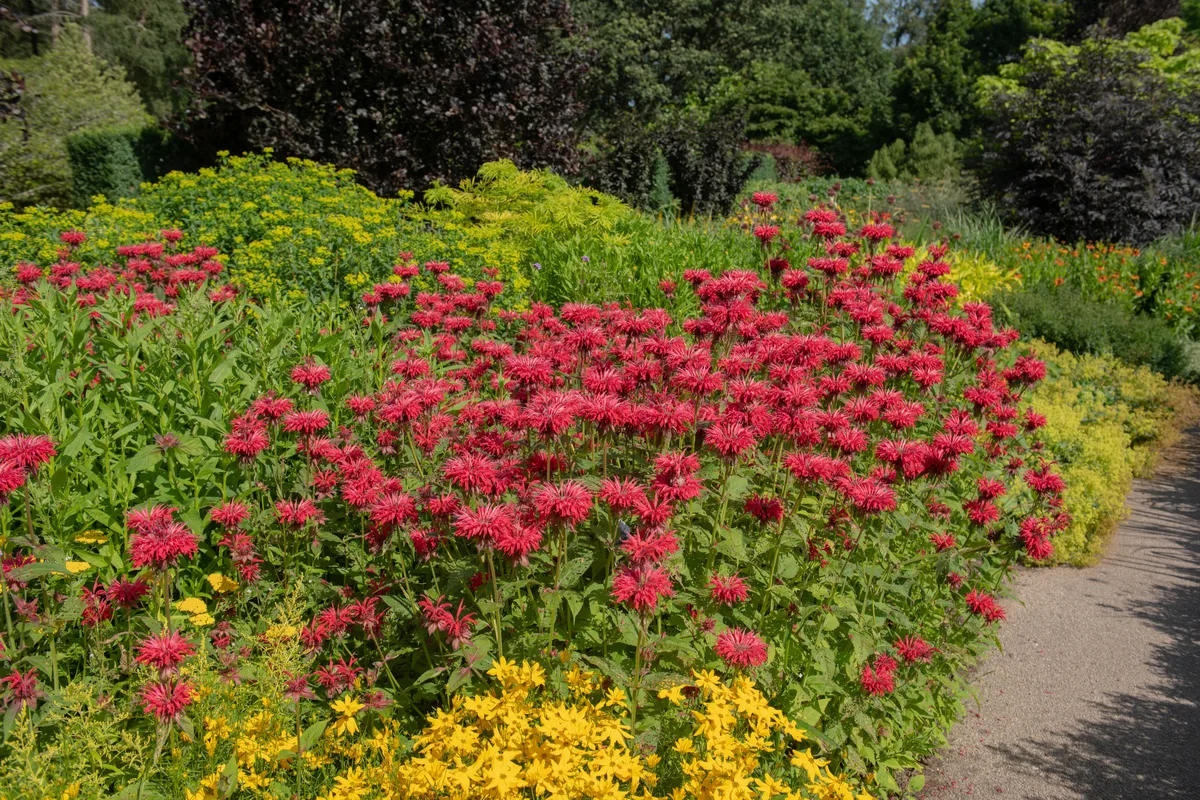
Care Needs:
- Moisture: Water well until established. Maintain moisture levels with weekly watering of mature plants.
- Maintenance: Easy.
- Feeding: Rarely necessary. Mulch with compost in spring. Overfeeding may cause weak, leggy growth and is susceptible to pests and disease.
- Pruning / Deadheading: Pinching young monarda plants will encourage side shoots. This results in bushier growth and abundant blossoms. Deadheading Bee Balm will extend the blooming season. After the first flush of blooms cut finished blooms off just above the next set of leaves with emerging side shoots. Use a 45° cut. Alternatively, you can leave the seedheads in place to provide a food source for visiting birds.
- Overwintering: In winter, protect Bee Balm with mulch in addition to the plant’s foliage. Leave seedheads for birds to scavenge Bee Balm nutlets through winter. In spring, remove mulch and cut down Bee Balm plant to 2 to 4 inches to make way for this season’s new growth.
Varieties and Hybrids
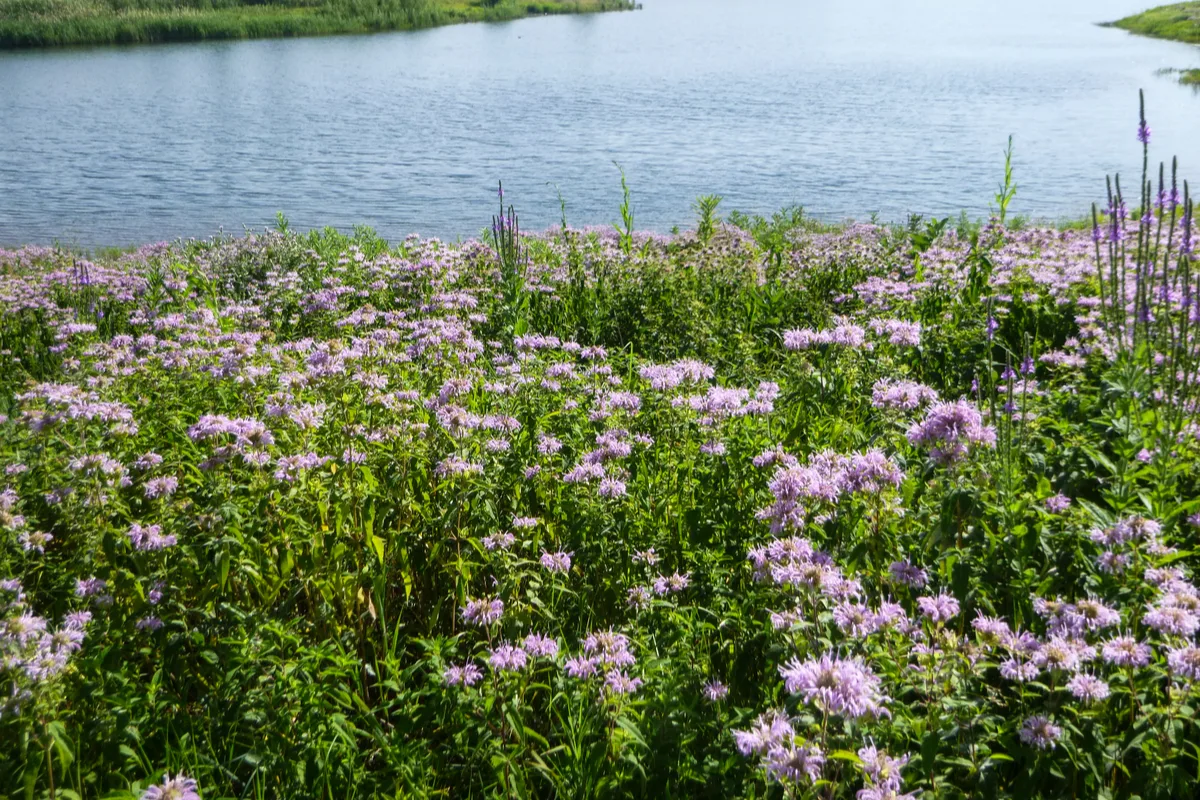
Three native Monarda species, M. didyma, M. fistulosa, and M. pringlei have sprung many commercial hybrids and cultivars that are exceptional in the home garden.
Monarda didyma ‘Jacob Cline’ is loved for its exquisitely scarlet flowers preferred by hummingbirds.
Fragrant Monarda fistula ‘Claire Grace’ has dark purple flowers and superior powdery mildew resistance.
Monarda series of cultivars include Sugar Buzz®, Bee-You®, BalmyTM, On Parade, and Proven Winners’ Pardon My and Leading Lady.
How to Propagate Bee Balm
Bee Balm spreads quickly with underground stolons. This makes division an easy way to propagate Bee Balm.
- In spring, dig up plants as soon as they emerge.
- With a sharp knife or shovel, divide clumps into sections.
- Ensure each section has a good root system and 2 to 3 shoots.
- Replant immediately.
Bee Balm grows well from seed. Find Bee Balm seed at Swallow Tail Garden Seed. Follow seed package directions.
To Plant Bee Balm Seeds:
- Sow seeds in good quality seed starting mix in cell packs or flats.
- Press seeds into the soil but do not cover because light helps bee balm seeds to germinate.
- Seedlings emerge in 14-21 days at 60-70° F.
- Transplant bee balm plants into garden 1-2 ft. apart.
Buy Established Bee Balm Plants
You can buy established bee balm plants in a number of varieties from Nature Hills Nursery here.
Bee Balm Diseases and Common Pests
Bee Balm attracts many insects, not all of them good. Although Bee Balm may suffer minor insect damage, these insects attract and feed beneficial insects and birds, one of Bee Balms’ great benefits. The flamboyant flowers will hopefully make up for any unsightly insect damage. For tall varieties, plant shorter plants in front to cover leggy stems and damaged leaves, if desired.
Powdery mildew may be a problem for Bee Balm. If this is an issue in your garden, plant disease-resistant varieties, avoid overcrowding plants, ensure adequate moisture, provide good air circulation, and destroy diseased plant parts.
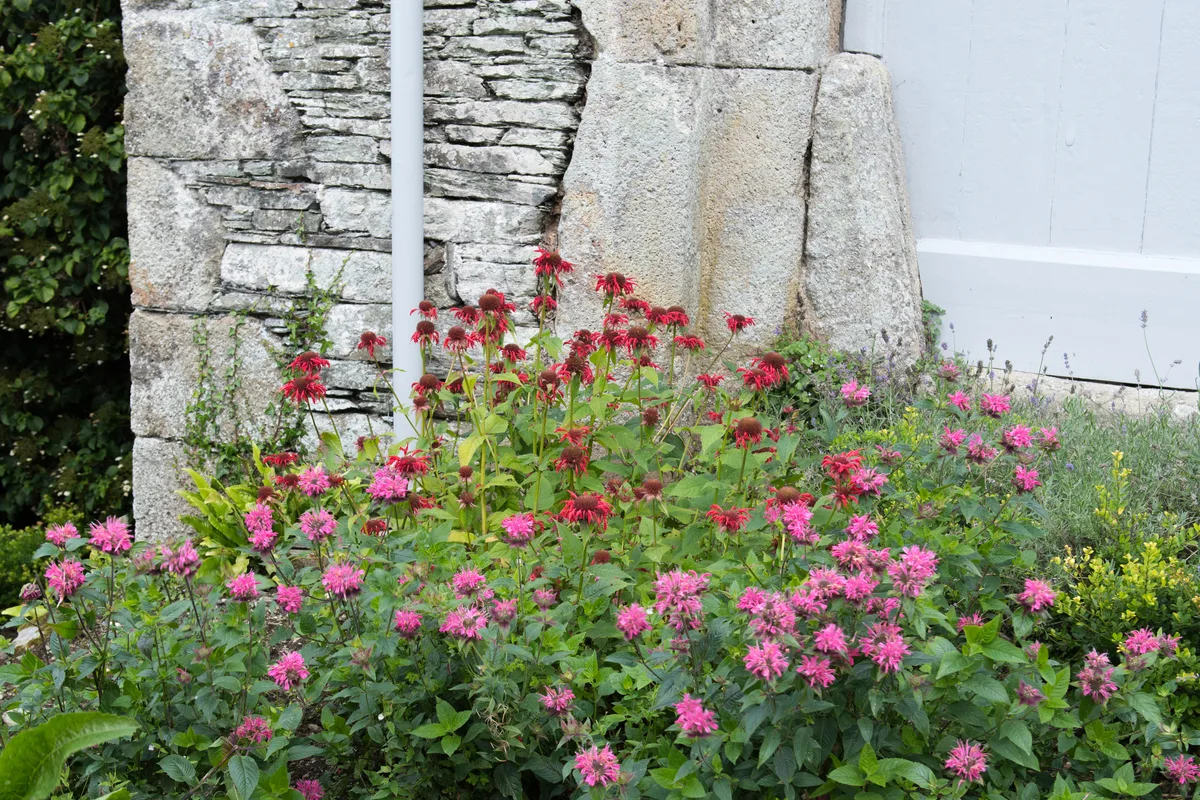
Companion Plants for Bee Balm
Vegetables like squash, beans, and tomatoes love Bee Balm for the pollinators and beneficial insects that visit it!
In cottage gardens, legacy gardens, wildlife gardens, and perennial borders, Bee Balm looks fantastic. Bee Balms’ friends are Yarrow, Goat’s Beard, Veronica, Cardinal Flower, Salvia, Phlox, Daylily, Echinacea, Rudbeckia, and Gaillardia.
Romantic Color Scheme Flowers to Plant with Bee Balm
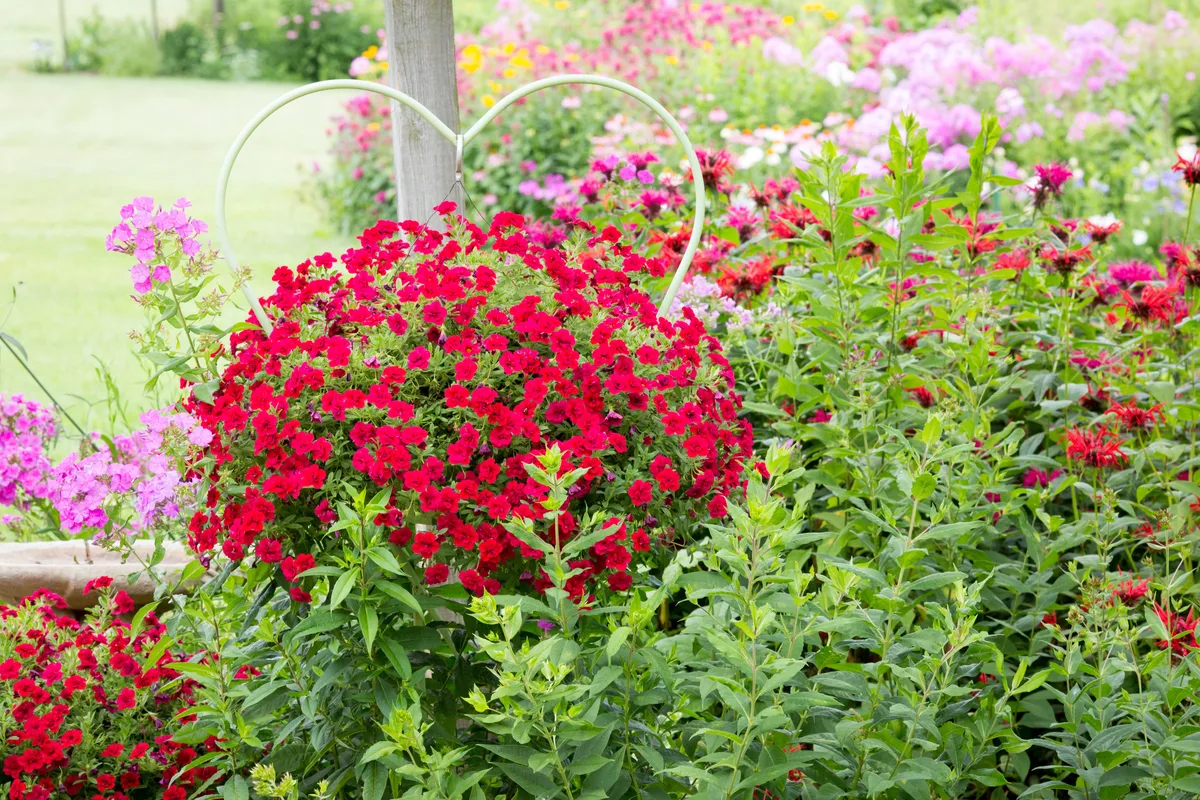
Cheerful and romantic, Bee Balm’s scarlet reds, blushing pinks, and vivacious purples go hand in hand with spring-blooming pink and red Peonies, Star Gazer Lilies, Milkweed, and Astilbe.
Summer love blooms for Bee Balm and Echinacea, Salvia, and Dianthus. Romantic matches for fall blooming Bee Balm are Cardinal Flower, Sedum, and Hollyhock.
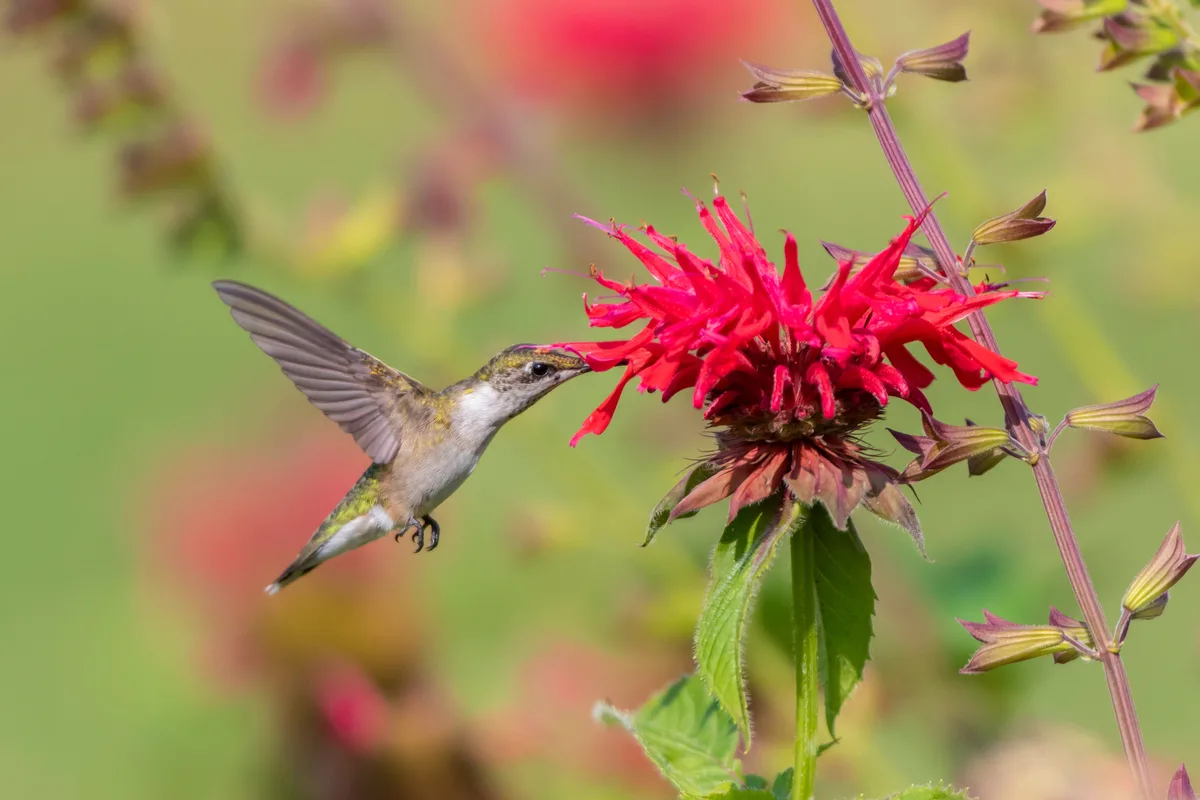
When Bee Balm is in your garden it is a magnificent addition to the blooming backyard. It attracts and supports wildlife, helps in the vegetable and herb garden, and is beyond beautiful with flamboyant shaggy flowers.
